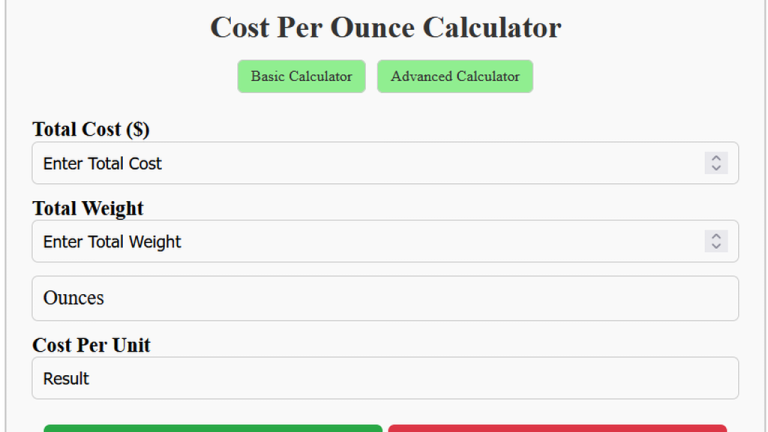Die Per Wafer Calculator
The Die Per Wafer (DPW) calculation estimates the number of semiconductor dies that can fit on a single wafer, considering wafer size, die dimensions, and edge exclusion.
The Die Per Wafer Calculator helps determine the maximum number of chips that can be produced from a single wafer. This tool is widely used in the semiconductor industry to optimize production and assess costs. Factors such as wafer size, die dimensions, and process constraints like edge exclusion influence the result.
Formula
DPW = d × π × (4 / (4 × S) − 1 / √(2 × S))
| Variable | Description |
|---|---|
| DPW | Number of dies per wafer |
| d | Wafer diameter (in mm) |
| S | Die size (in mm²) |
Solved Calculations
Example 1: Calculating DPW for a 300mm Wafer with 25mm² Die
| Step | Value |
|---|---|
| Wafer Diameter (d) | 300 mm |
| Die Size (S) | 25 mm² |
| DPW | 300 × π × (4 / (4 × 25) − 1 / √(2 × 25)) ≈ 707 Dies |
Example 2: Calculating DPW for a 200mm Wafer with 100mm² Die
| Step | Value |
|---|---|
| Wafer Diameter (d) | 200 mm |
| Die Size (S) | 100 mm² |
| DPW | 200 × π × (4 / (4 × 100) − 1 / √(2 × 100)) ≈ 314 Dies |
What is a Die Per Wafer Calculator?
The Die Per Wafer Calculator is a practical tool used in semiconductor manufacturing to estimate the number of usable dies that can be obtained from a silicon wafer.
It takes into account the wafer size, die dimensions, and other relevant parameters like edge losses and defect density. This helps manufacturers optimize yield and minimize waste in chip production.
This calculator is especially valuable for calculating gross dies per wafer, determining die yield, and analyzing wafer utilization for different die sizes.
For example, users can evaluate how many chips can be produced from 200mm or 300mm wafers, which are common in the industry. The tool also facilitates comparisons across wafer sizes and die layouts, ensuring accurate production planning.
Final Words:
As we wrap this up, the Die Per Wafer Calculator is a must-have for semiconductor manufacturing. It ensures precision, reduces waste, and supports better production planning for optimal results.





